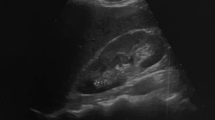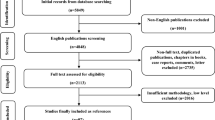Abstract
Oral litholysis is indicated for patients with gallbladder stones not exceeding 1.5 cm in diameter. Chenodeoxycholic acid and ursodeoxycholic acid are safe, the therapy is not more expensive than surgery and has a success rate of 60 to 70%. Extracorporeal shock-wave lithotripsy in combination with oral litholysis is indicated for patients with solitary stones of 2 cm in diameter. Side effects are minimal, success rate 90% after 12 months therapy. Methyl tert-butyl ether for direct contact litholysis after gallbladder puncture is suitable for all stone numbers and stone sizes in low and high risk patients. Mean treatment time is 9 hours, dissolution rate 95%. Only few side effects have been reported. Solvents for intra-and extrahepatic pigment stones are available, but toxicity investigations are still lacking.
Disadvantages of chemolitholysis are a success rate of less than 100%, long treatment times and stone recurrence. The annual recurrence rate is 10% through 4 to 5 years. Postdissolution therapy cannot prevent but only reduce the recurrence rate. Oral litholysis is without therapy-related side effects and without a lethality, it will always have a place in gallstone therapy. For rating shock-wave lithotripsy and contact litholysis we need more data. Since chemolitholysis of intrahepatic pigment stones in many patients is the only or at least safest therapy, it will have a place in the future.
Zusammenfassung
Die orale Litholyse ist für Patienten mit Gallenblasensteinen angezeigt, die nicht größer als 1,5 cm im Durchmesser sind. Chenodesoxycholsäure und Ursodesoxycholsäure stellen eine sichere Behandlung dar, die Therapie ist nicht teurer als die Operation und hat eine Erfolgsrate von 60 bis 70%. Die extrakorporale Schockwellenlithotripsie in Verbindung mit oraler Litholyse ist für Patienten mit Solitärsteinen mit einem maximalen Durchmesser von 2 cm indiziert. Nebenwirkungen sind sehr selten, die Erfolgsrate liegt nach 12monatiger Nachbehandlung bei 90%. Die direkte Kontaktlitholyse mit Methyl-tert-Butyl-Äther nach Gallenblasenpunktion ist für jede Steinzahl und— größe geeignet, besonders für Patienten mit hohem Operationsrisiko. Die durchschnittliche Behandlungszeit beträgt 9 Stunden, die Auflösungsrate 95%. Nebenwirkungen sind selten. Lösungsmittel für intra-und extrahepatische Pigmentsteine sind wirkungsvoll, doch liegen zur Zeit noch keine Toxizitätsuntersuchungen vor.
Die Nachteile der Chemolitholyse sind eine Erfolgsrate unter 100%, die langen Behandlungszeiten und die Möglichkeit der Rezidivsteinentwicklung. Die jährliche Rezidivrate beträgt 10% über 4 bis 5 Jahre. Die Nachbehandlung nach Steinauflösung kann Rezidive nicht verhindern, sondern nur die Häufigkeit reduzieren. Die orale Litholyse hat keine therapiebezogenen Nebenwirkungen und besitzt keine Letalität, weswegen sie immer einen Platz bei der Gallensteinbehandlung haben wird. Um die Schockwellenlithotripsie und die Kontaktlitholyse einschätzen zu können, werden weitere Daten benötigt. Da die Chemolitholyse von intrahepatischen Pigmentsteinen für viele Patienten das einzige Therapieverfahren darstellt, wird sie auch in Zukunft einen Platz in der Behandlung des Gallensteinleidens haben.
Similar content being viewed by others
References
Albert MB, Fromm H: Extracorporeal shock-wave lithotripsy of gallstones with the adjuvant use of cholelitholytic bile acids. Semin Liv Dis 1990;10:197–204.
Allen MJ, Borody TJ, Bugliosi TF, May GR, La-Russo NF, Thistle JL: Rapid dissolution of gallstones by methyl tert-butyl ether. N Engl J Med 1985;312:217–220.
Barbara L, Bazzoli F, Festi D, Morselli AMC, Roda E: Comparative study of CDC and UDC as cholesterol gallstone dissolving agent, in Paumgartner G, Stichl A, Gerok W (eds) Bile acids and cholesterol in health and disease. Lancaster, MTP, 1983; pp 367–370.
Bugliosi TF, Borody TJ, Allen MJ, Rach GJ, La-Russo NF, Thistle JL: Methyl tertiary-butyl ether (MTBE) in expired air and methanol in blood do not reach potentially harmful levels after gallbladder and duodenal instillation of therapeutic doses of MTBE in dogs. Gastroenterology 1984;86(abstract):1313.
Capocaccia L. Ricci G: Epidemiology of gallstone disease, in Barbara L, Dowling RH, Hofmann AF (eds): Recent advances in bile acid research. New York, Raven, pp 231–238.
Cotton PB, Vallon AG: British experience with duodenoscopic sphincterotomy for removal of bile duct stones. Br J Surg 1981;68:373–375.
Danzinger RG, Hofmann AF, Schoenfield LJ, Thistle JL: Dissolution of cholesterol gallstones by chenodeoxycholic acid. N Engl J Med 1972;286: 1–8.
Di Padova C, Di Padova F, Montorsi W, Tritapepe R: Methyl tert-butyl ether fails to dissolve retained radiolucent common bile duct stones. Gastroenterology 1986;91:1296–1300.
Dlhos PE, Berster H, Dlhos A: Postoperative Spülbehandlung von Gallenwegskonkrementen mit Chenodesoxycholsäure. Med Welt 1976;27:2072–2073.
Dowling RH, Ruppin DC, Meredith T, Myszor M, Forgacs L, Murphy GM: Efficacy of bile acid treatment in dissolving gallstones, in Paumgartner G, Stichl A, Gerok W (eds). Bile acids and cholesterol in health and disease. Lancaster, MTP, 1983; pp 345–362.
Dowling RH, Rajagopal SU, Keightley A, Walters JFR, Murphy GM: Pre-treatment CT scanning of the gallbladder predicts stone composition, disolvability and fragmentability, 2nd Int Meeting on Pathochemistry, Pathophysiology and Pathomechanics of the Biliary System, Bologna/Italy, March 19–21, 1990, p. 100.
Encke A, Leuschner U: Methoden und Ergebnisse der Gallsteinauflösung, Chirurg 1990;61:354–358.
Güldütuna S, Hellstern A, Leuschner M, Kurtz W, Lembcke B, Heller K, Leuschner U: Endoscopy, lithotripsy and local lysis in complicated pigment stones of the extra-and intrahepatic biliary tract. Dtsch Med Wschr 1991;116:288–293.
Johansson G: A prospective study of the clinical significance of the treatment of gallstones with ursodeoxycholic acid. Surg Gynaecol Obstet 1984;159:127–129.
Kupfer RM, Maudgal DP, Northfield TC: Gallstone dissolution rate during chenic acid therapy: Effect of bedtime administration plus low cholesterol diet. Dig Dis Sci 1982;27:1025–1029.
Lanzini A, Jazrawi RP, Kupfer RM, Maudgal DP, Joseph AEA, Northfield TC: Gallstone recurrence after medical dissolution. An overestimated threat? J Hepatology 1986;3:241–246.
Leuschner U, Baumgärtel H, Wurbs D: Auflösung von Cholesterin-Gallengangssteinen mit einer modifizierten Capmul 8210-Emulsion und einer EDTA-Gallensalzlösung. Leber Magen Darm 1980;10:284–287.
Leuschner M, Leuschner U, Strohm WD, Trüber E, Fuchs H, Classen M: Radiological and ultrasonographic investigations with respect to patient selection and monitoring for chemical gallstone dissolution. Hepato-Gastroentero 1984;31:140–143.
Leuschner U, Baumgärtel H, Leuschner M, Frenk H, Klicic X: EDTA solutions for the dissolution of calcium bilirubinate stones. Digestion 1986;34:36–45.
Leuschner U, Wosiewitz U, Baumgärtel H, Leuschner M, Iwamura K, Klicic X, Frenk H: Dissolution of calcified cholesterol stones and of brown and black pigment stones of the gallbladder. Digestion 1988;39:100–110.
Leuschner U, Hellstern A, Schmidt K, Fischer H, Güldütuna S, Hübner K, Leuschner M: Gallstone dissolution with methyl tert-butyl ether in 120 patients —efficacy and safety. Dig Dis Sci 1991; 36:193–199.
Leuschner U, Hellstern A, Güldütuna S, Gatzen M, Leuschner M: Direct contact dissolution of gallbladder stones with methyl tert-butyl ether: Experience in 209 patients. Z Gastroenterol. Verhandlungsband 1991;26:199–201.
Leuschner M, Hellstern A, Güldütuna S, Gatzen M Leuschner U: Gallstone dissolution with methyl tert-butyl ether (MTBE): Comparison between manual and machine-assisted procedure in matched pairs. J Hepatol 1991;13(suppl 2): 138.
Mack EA, Saito C, Goldfarb S, Crummy AB, Thistle JL, Carlson GL, Babayan VK, Hofmann AF: A new agent for gallstone dissolution: Experimental and clinical evaluation. Surg Forum 1978;29:438–439.
Makino I, Hashimoto H, Shinozaki K, Yoshino K, Nakagawa S: Dissolution of cholesterol gallstones by ursodeoxycholic acid. Jpn J Gastroenterol 1975;72:690–702.
McCullough JE, Stadheim LM, Reading CC, Petersen BT, Thistle JL: Gallstone recurrence after methyl tert-butyl ether dissolution. Gastroenterology 1990;98:A255.
Nakajima M, Kizu M, Akasaka Y, Kawai K: Five years experience of endoscopic sphincterotomy in Japan: A collective study from 25 centres. Endoscopy 1979;2:138–141.
Nelson BK: Developmental neurotoxicology of in vitro exposure to industrial solvents in experimental animals. Neurotoxicology 1986;7:441–447.
Northfield TC, Jazrawi RP, Petroni ML: Medical dissolution therapy, in Paumgartner G, Stiehl A, Barbara L, Roda E (eds): Strategies for the treatment of hepatobiliary diseases. Dordrecht, Kluver Acad, 1990, pp 163–180.
Palmer KR, Hofmann AF: Intraductal monooctanoin for the direct dissolution of bile duct stones: Experience in 343 patients. Gut 1986; 27:196–202.
Pelletier G, Delmont J, Capdeville R, Mosnier H, Raymond JM, Collet D, Caroli FX, Moreaux J, Guivarch M, Amouretti M, Perissart J, Guivarch P, Erlinger S, Etienne JP: Treatment of gallstones with piezoelectric lithotripsy and oral bile acids. A multicenter study. J Hepatol 1991;12:327–331.
Podda M, Zuin M, Battezzati PM, Ghezzi C, DeFazio C, Dioguardi ML: Efficacy and safety of a combination of chenodeoxycholic acid and ursodeoxycholic acid alone. Gastroenterology 1989; 86:222–229.
Podda M, Zuin M, Dowling RH, Barbara L, Fromm H, Salen G: Extracorporeal lithotripsy of gallbladder stones: Results, cost effectiveness, future perspectives. Gastroenterology Int 1989; 2:107–110.
Reiter JJ, Bayer HP, Mennicken C, Manegold BC: Results of endoscopic papillotomy: A collective experience from nine endoscopic centers in West Germany. World J Surg 1978;2:205–211.
Sackmann M, Delius M, Sauerbruch T, Holl J, Weber W, Ippisch E, Hagelauer U, Wess O, Hepp W, Brendel W, Paumgartner G: Shock-wave lithotripsy of gallbladder stones. The first 175 patients. N Engl J Med 1988;318:393–397.
Sackmann M, Ippisch E, Sauerbruch T, Holl J, Brendel W, Paumgartner G: Early gallstone recurrence rate after successful shock-wave therapy. Gastroenterology 1990;98:392–396.
Sackmann M, Pauletzki J, Sauerbruch T, Holl J, Schelling G, Paumgartner G: The Munich gallbladder lithotripsy study. Results of the first 5 years with 711 patients. Ann Int Med 1991;114:290–296.
Teplick SK, Haskin PH, Goldstein RC, Corrasce JM, Frank E, Sammon JK, Hofmann AF: Common bile duct stone dissolution with methyltertiary-butyl ether: Experience with three patients. A J R 1987;148:372–374.
Thistle JL, Carlson GL, Hofmann AF, La-Russo NF, MacCarty RL, Flynn GL, Higuchi WI, Babayan VK: Monooctanoin, a dissolution agent for retained cholesterol bile duct stones: Physical properties and clinical application. Gastroenterology 1980;78:1016–1022.
Thistle JL, LaRusso NF: Combination of taurine or chenodeoxycholic acid with ursodeoxycholic acid therapy: Effects on biliary lipids, bile acids and gallstones, in Paumgartner G, Stiehl A, Gerok W (eds): Enterohepatic circulation of bile acids and sterol metabolism. Lancaster, MTP, 1984:355–359.
Thistle JL, May GR, Bender CE, Williams HJ, LeRoy AD, Nelson PE, Peine CJ, Petersen BT, McCullough JE: Dissolution of cholesterol gallbladder stones by methyl tert-butyl ether administered by percutaneous transhepatic catheter. N Engl J Med 1989;320:633–639.
Way LW, Admirand WH, Dunphy JE: Management of choledocholithiasis. Ann Surg 1972;176:347–356.
Wolpers C: Selection of patients with gallstones for litholysis. Leber Magen Darm 1976;6:43–46.
Wolpers C: Changes of “silent” gallstones. Radiological findings and symptoms observed over 30 years. Dtsch Med Wschr 1986;111:1186–1191.
Wosiewitz U, Schenk J, Sabinski F, Schmack B: Investigations on common bile duct stones. Digestion 1983;26:43–52.
Wosiewitz U, Güldütuna S, Fischer H, Leuschner U: Pigment gallstone dissolution in vitro: Solubilization of brown bilirubinate and black polibilirubinate stone material by buffered solvents containing ethylenediaminetetraacetic acid, bile salts, and reducing thiols. Scand J Gastroenterol 1989;24:373–380.
Wosiewitz U, Sabinski F, Haus C, Güldütuna S, Leuschner U: Experimental dissolution of pigment gallstone material using alkaline EDTA and adjuvant bile salts/non-bile salt detergents, thiols and urea with respect to local litholysis. J Hepatol 1992;14:7–15.
Villanova N, Bazzoli F, Taroni F, Frabboni R, Mazzella G, Festi D, Barbara L, Roda E: Gallstone recurrence after successful oral bile acid treatment. A 12-year follow-up study and evaluation of longterm post-dissolution treatment. Gastroenterology 1989;97:726–731.
Author information
Authors and Affiliations
Rights and permissions
About this article
Cite this article
Leuschner, U. Current status of chemolitholysis. Acta Chir Austriaca 24, 245–250 (1992). https://doi.org/10.1007/BF02601757
Issue Date:
DOI: https://doi.org/10.1007/BF02601757




